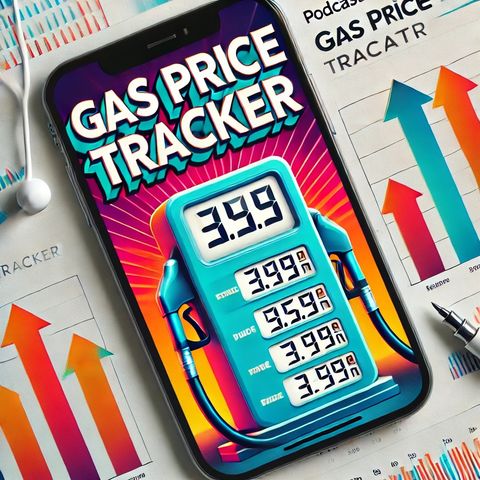US Gas Prices in November 2024 Fluctuate Due to Global Oil Markets Seasonal Demand and Regional Economic Factors

Descarga y escucha en cualquier lugar
Descarga tus episodios favoritos y disfrútalos, ¡dondequiera que estés! Regístrate o inicia sesión ahora para acceder a la escucha sin conexión.
US Gas Prices in November 2024 Fluctuate Due to Global Oil Markets Seasonal Demand and Regional Economic Factors
Esta transcripción es generada automáticamente. Ten en cuenta que no se garantiza una precisión absoluta.
Descripción
As of November 15, 2024, gas prices in the United States are influenced by a combination of domestic factors, global market dynamics, and season-specific demand variations. Gasoline prices often vary...
mostra másThe recent trends in gas prices are partly driven by shifts in crude oil prices. Crude oil, being a major component in gasoline, greatly affects gas prices at the pump. Globally, crude oil prices have experienced volatility due to geopolitical tensions, changes in production levels by major oil-producing countries, and shifts in consumer demand, particularly as economies continue to balance post-pandemic recovery efforts with inflation concerns.
OPEC (Organization of the Petroleum Exporting Countries) plays a crucial role in setting the tone for global oil supply. Recent decisions to either cut or increase production quotas can lead to fluctuations in oil prices, subsequently impacting U.S. gas prices. The U.S. also has a significant domestic oil production industry, which helps buffer some external influences, though it does not entirely insulate the market from global trends.
Seasonal factors contribute to gas price variations. As of mid-November, demand for gasoline typically decreases compared to the summer months when travel peaks, leading to generally lower prices barring unusual circumstances. However, this period also sees transitions in refinery production as refineries shift to winter blend gasoline, which can temporarily affect supply and prices. Historically, winter blend gasoline is cheaper to produce due to fewer restrictions on emissions compared to summer blends.
In recent years, advancements in energy efficiency have also influenced gasoline demand. Electric vehicles and hybrid models are becoming more prevalent, potentially reducing gasoline consumption. Nonetheless, gasoline remains the predominant fuel for transportation in the United States. Infrastructure developments, policy changes, and incentives continue to encourage shifts toward more sustainable energy sources, contributing to long-term trends in fuel consumption.
Additionally, regional factors, such as weather events, can temporarily disrupt supply chains and impact gas prices. Hurricanes and severe storms, particularly during the fall hurricane season in regions like the Gulf of Mexico, can lead to refinery shutdowns and pipeline disruptions, which often result in price spikes.
Listeners should also consider state-level policies when examining gas price variations. States like California often have higher gas prices due to stringent environmental regulations and higher taxes compared to states in the Midwest or South.
In conclusion, gas prices in the U.S. for November 15, 2024, reflect a myriad of influences from global oil market changes, domestic production levels, seasonal demand adjustments, and regional factors such as taxes and environmental policies. These elements combine to create a complex landscape where prices at the pump are subject to regular fluctuations.
Información
| Autor | QP-5 |
| Organización | William Corbin |
| Página web | - |
| Etiquetas |
Copyright 2024 - Spreaker Inc. an iHeartMedia Company

Comentarios